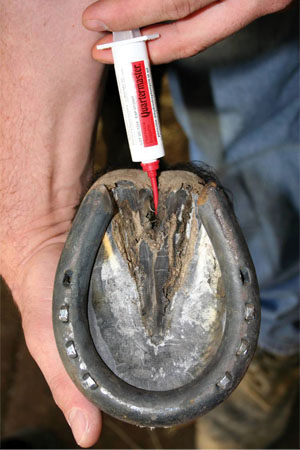American Farriers Journal
American Farriers Journal is the “hands-on” magazine for professional farriers, equine veterinarians and horse care product and service buyers.
The sole is the guardian that shields the sensitive structures of the hoof from contact with the outside world. Acting as the primary barrier against ground surface trauma, it is designed to handle concussion naturally; however, it seems that this once efficient protector has become one of the most abused structures of a horse’s anatomy.
While the sole itself can grow quickly, it is the formation of callous that creates the necessary cushioning effect and that develops slowly.
Using healthy hooves from domestic horses as the standard, sole thickness normally is about 3/8 inch, with a uniformed callous extending to the underside of the lateral cartilages and the coffin bone.
Seen in a standing horse, a naturally shaped hoof would also have an arch to reflect the coffin bone’s position at the front half of the foot, with the lateral cartilages forming the underpinning for the back half. This type of configuration allows for flexibility of movement, which enables the foot to effectively dissipate the shock of impact. And, while a stone bruise can happen as quickly as stepping on a rock, the amount of force placed on a thin-soled foot will have a direct effect on its susceptibility to harmful trauma in general.
Michael Wildenstein, the head of the farrier’s program at the College of Veterinary Medicine at Cornell University, says a variety of conditions that span the gamut from genetics, nutrition, management, environment, aging and past pathologies can bring on thin soles.

Thrush is…